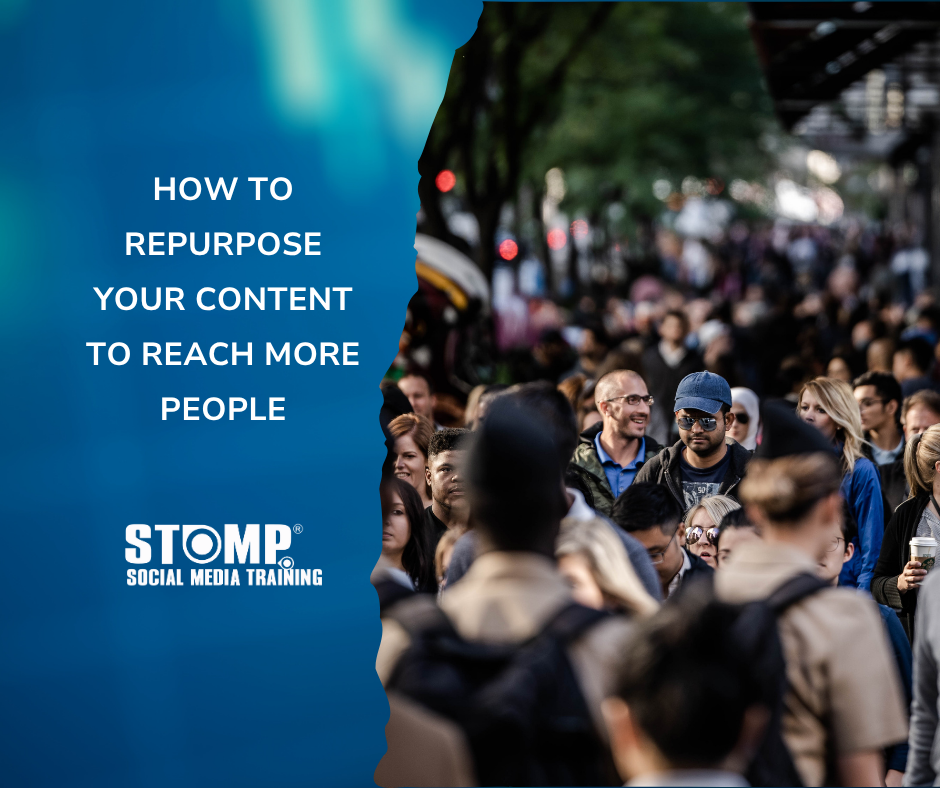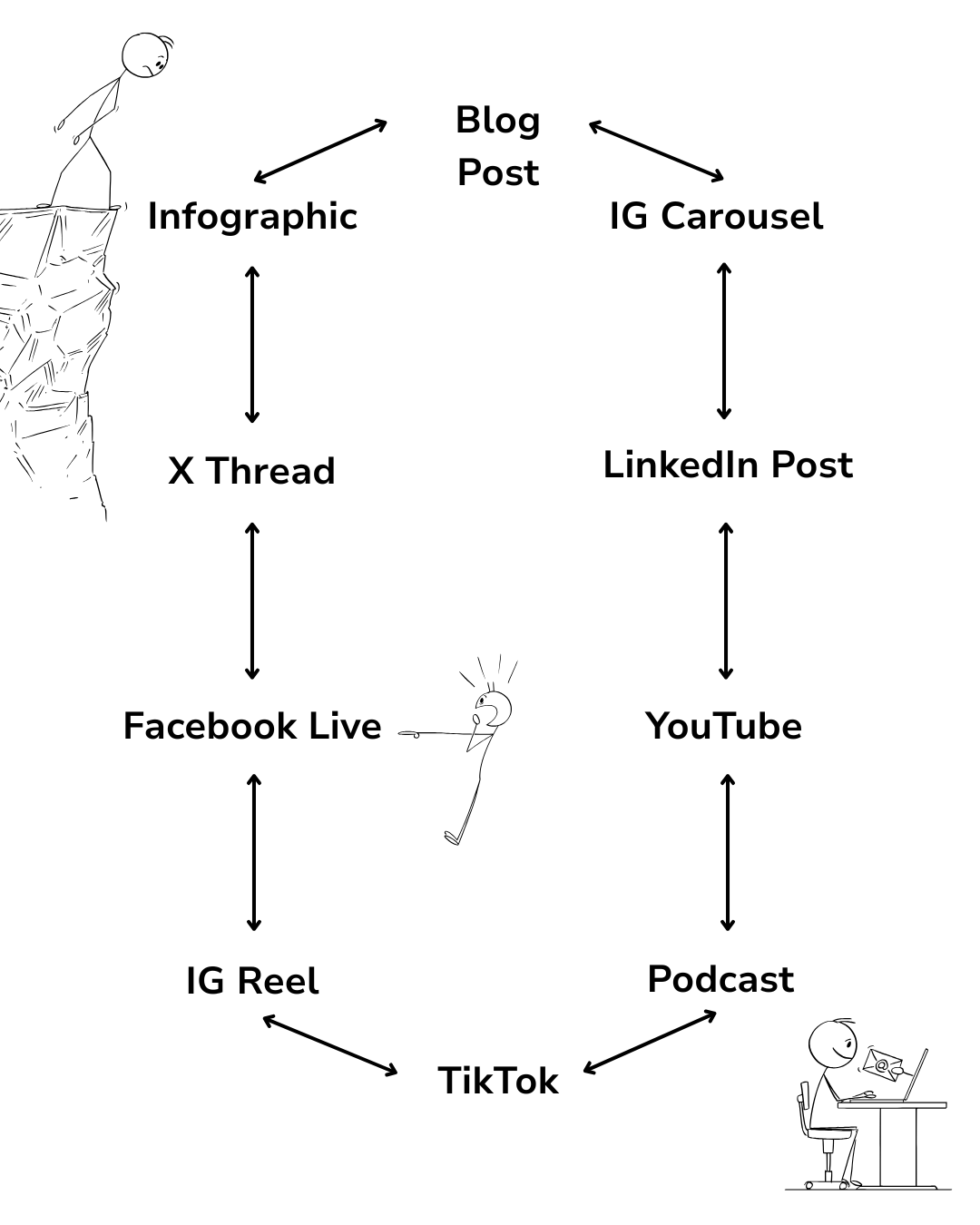
As a small business owner, you already know how much work it takes to consistently create content. Between social media, your website, newsletters, and printed materials, it can feel like you're constantly creating something. For a long time, I was spending blood sweat and tears on each thing (normally a blog to be honest) and then sharing it and just leaving it there. Then I noticed that not all of my audience would read my blogs. Some preferred to watch videos, others preferred to listen to podcasts and others still just plain wanted to be shown how to do it themselves.
Repurposing content, which is adapting one piece of content into multiple formats for different platforms, is essential. It gives your ideas more mileage.
There are paid for tools you can use of course, but now everyone has the budget for that.
I would stress though, that repurposing shouldn’t just be online, it’s well worth considering it for offline stuff too.
Begin with one and ideally "evergreen" piece of content. This could be:
Let’s say you’ve written a blog post called “5 Ways to Save Time on Social Media Each Week.” This will be where you start.
Think about where your audience spends their time. For most small businesses, your mixmight include:
Online:
Offline
Your goal is tobring your content to life in formats that suit these platforms without starting from scratch.
Let’s repurpose that blog post across different formats. I’ll start with online media first.
Social MediaPosts
Break the post into bite-sized tips and share them as a series. Each of your five time saving tips can become its own post or Reel. Add a visual, a short caption, and a call to action like “Want more tips? Read the full blog.” Calls to action are key.
Infographic or Carousel
Use Canva or another design tool to turn your list into a branded infographic or a carousel post for LinkedIn or Instagram. People love to save and share these types of formats.
Newsletter
Summarise the blog post in your email newsletter and a link to read more. Add a personal note or a customer quote to tie it in with your brand story.
Short and / or Reel
Turn your tips into a quick video with you on camera, or use stock footage and then add text overlays. Keep it under 60 seconds for Reels or TikTok.
Podcast Segment
If you have a podcast, mention the blog topic in an episode or even dedicate a short episode to expanding on the tips with examples from your own business. A lot of the episodes on The Monday Morning Marketing Podcast are repurposed blogs of mine :D
Printed Handouts, Flyers, Lead Magnets / Downloads
Design a simple one pager that summarises your blog post in a visually appealing way. These are great to have on hand at events, in your shop, or included in product packaging. You see a lot of product type businesses doing this for added value.
Local Newspaper or Magazine Article
Can you pitch your blog post as an article. Perhaps change the wording to suit a broader audience and remove any sales-y tone. Trust me, you don’t always have to pay to get your post in a newspaper.
Speaking,Workshops or Webinars
Use the blog as a basis for a presentation or workshop. Add a few real-life examples and invite questions to make it interactive. This positions you as an expert and gives the content a new life.

Repurposing doesn’t mean copying everything word for word. Each channel has its own tone, style, and audience expectations. Here’s how to adjust:
Always includes a call to action, whether it’s visiting your website, scanning a QR code, signing up for a workshop, or following you online.
Use a content calendar to map out when and where each piece will go. You don’t need to post everything at once, I highly recommend you don't in fact, spacing it out helps stretch your message across several weeks or even months. I use Missinglettr to help me with this.
Example schedule for this blog post:
Week Platform Format
1 Blog Full post goes live
2 Instagram Carousel of 5 tips
3 Newsletter Summary and link
4 Local event Printed flyer takeaway
5 Podcast Audio version or discussion
6 LinkedIn Behind-the-scenes story about how you wrote the blog
This keeps your content working for you over time without feeling repetitive.
Repurposing content isn’t just a time saver, it’s a strategy that helps you show up consistently across different touchpoints (https://focus-digital.co/average-touchpoints-per-purchase-by-industry/), both online and offline. By tweaking your content to match the format and the audience, you’re more likely to be seen, remembered, and trusted.
The next time you create something, think how else can I repurpose this? With a bit of planning, that one blog post can become a podcast clip, a Reel, a workshop, a lead magnet and of course another way for us to convince our customer they should work with us.